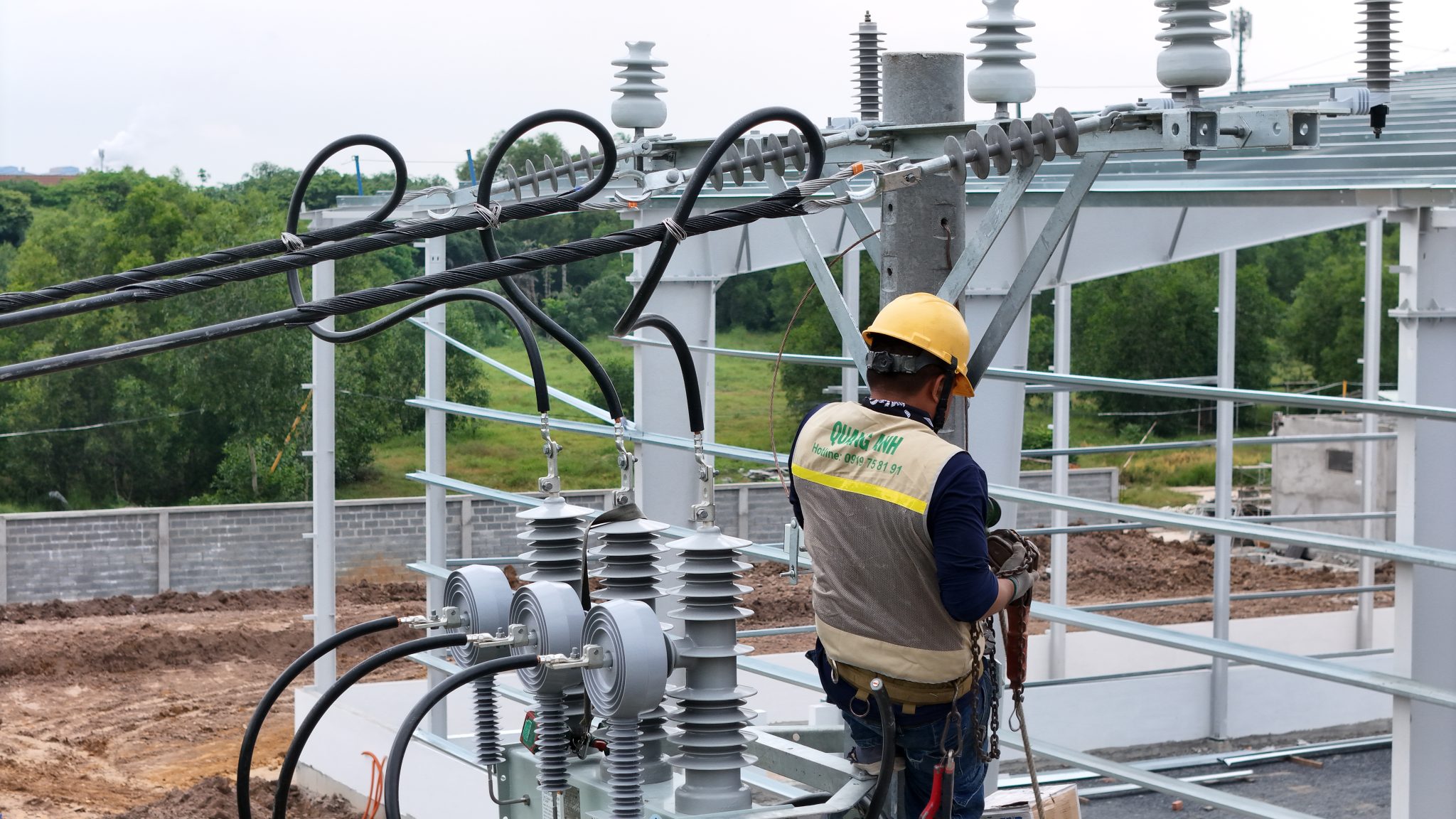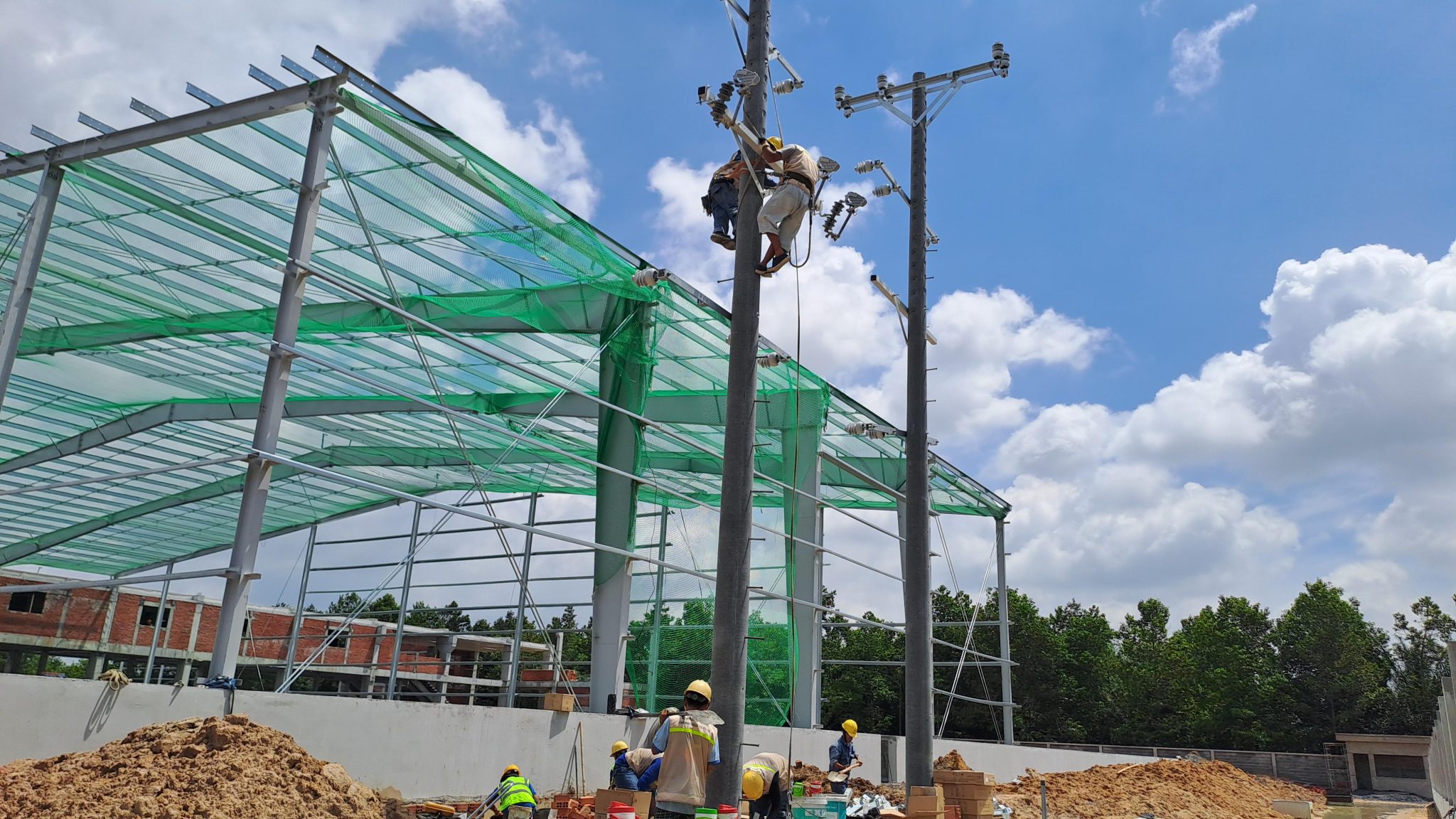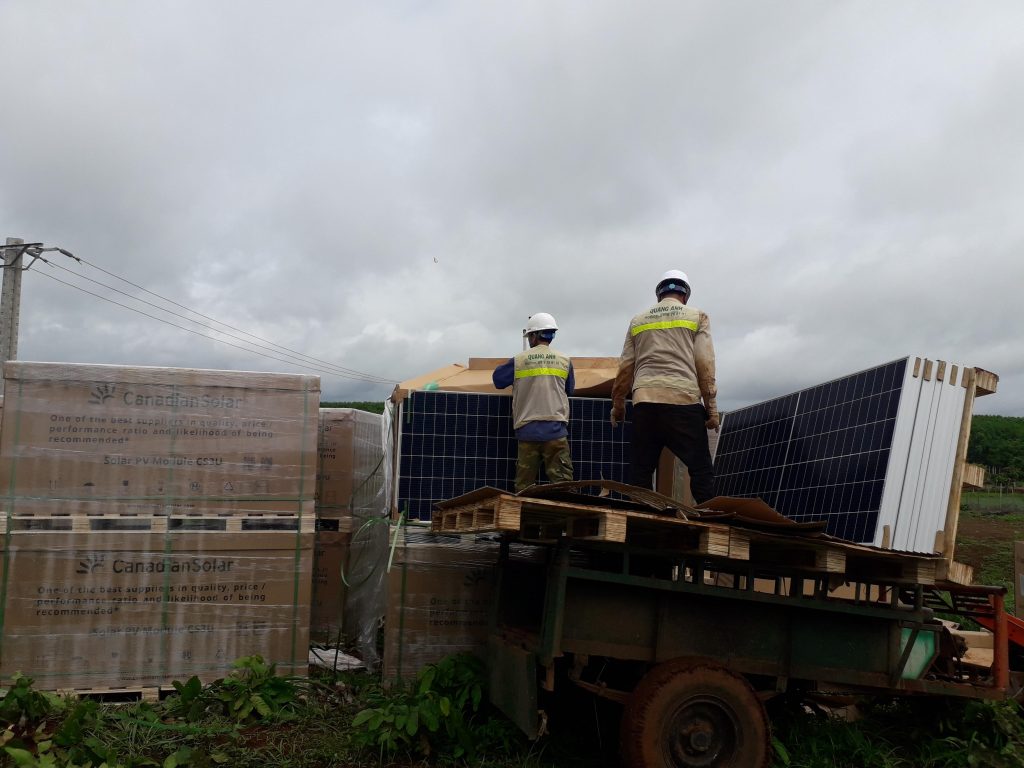News
Quang Ngai solar power planning: legal basis, irradiance potential, and development orientation 2024–2030
Table of contents:
Quang Ngai solar power planning is clearly oriented with capacity targets under the Power Development Plan VIII (adjusted), while updating the project list at the provincial level in parallel. The area has favorable irradiance; PVout indices are published to support forecasting. The province prioritizes rooftop solar and utility-scale projects associated with industrial parks for self-consumption. The local grid has integrated renewable sources, and procedures for interconnection and permitting are being coordinated to resolve bottlenecks. Development must comply with land and environmental constraints and impact assessments as prescribed. The 2024–2030 period faces challenges in procedures, land availability, and grid upgrade needs; at the same time, it opens opportunities thanks to policy orientation, irradiance potential, and rising load demand.
Legal basis and planning orientation
Quang Ngai solar power planning is established based on official documents. According to the adjusted Power Development Plan VIII, the province’s utility-scale solar capacity is about 802 MW and rooftop solar about 231 MW. In parallel, the province is updating a list of around 11 new projects with a total planned capacity of about 600 MW. The planning orientation emphasizes developing rooftop sources, utility-scale projects associated with industrial parks, and on-site self-consumption models. This approach ensures synchronization between land use and the existing grid, in line with the implementation timeline of Power Development Plan VIII. The information published by provincial and central regulatory agencies serves as the basis for implementing items under Quang Ngai solar power planning, including priority in Quang Ngai industrial parks and list management mechanisms according to the competent authority..
Key legal framework and capacity targets
According to the adjusted Power Development Plan VIII for 2025–2030 approved under Decision 768/QD-TTg (15/4/2025), Quang Ngai solar power is allocated 802 MW of utility-scale sources and 231 MW of rooftop sources. The province’s total power source capacity is about 6,852.1 MW, with additional grid infrastructure including 3x 500 kV substations and 8x 220 kV substations to evacuate capacity from renewable energy projects. This synchronization creates a clear technical corridor for investors and operators when deploying in the area.
Updated project list and implementation status
During 2023–2025, the province reviewed and added 35 energy projects to planning, including 11 solar projects with a total planned capacity of about 600 MW. At the same time, the list also includes 16 hydropower projects (367.9 MW), 6 wind power projects (522.6 MW), and 2 biomass projects (38 MW). Quang Ngai solar projects are at steps of preparing dossiers, investment proposals, and awaiting approval, aiming to increase the share of renewable energy in the province’s power source mix in line with the roadmap of Power Development Plan VIII.
Prioritizing rooftop solar tied to self-consumption models
The province’s orientation emphasizes developing rooftop solar with on-site self-consumption models, especially in Quang Ngai industrial parks and clusters. Practical implementation shows this trend has begun with real-scale projects, such as a 705 kWp system at Quang Phu Industrial Park (2025). The Department of Industry and Trade publishes the PVout factor and implements mechanisms under Decree 58/2025/ND-CP (03/03/2025), facilitating procedures for organizations and households to install and operate, while standardizing technical requirements for interconnection with the existing grid.
Decentralized management and procedural sequence
- Large-scale, important projects fall under the consideration and approval authority of central agencies such as the Ministry of Industry and Trade or the Prime Minister.
- Smaller projects and rooftop solar are guided, appraised, and submitted by the province and the Quang Ngai Department of Industry and Trade under the Law on Electricity and related decrees.
- The Quang Ngai Provincial People’s Committee coordinates with the Department of Industry and Trade to review and complete legal dossiers to select investors, and proposes planning adjustments under its authority or reports to the Ministry of Industry and Trade when necessary.
This decentralized approach helps shorten processing time while ensuring consistency between the central legal framework and practical implementation conditions at the local level.
Synchronization of land use and grid infrastructure
Solar power planning is integrated with land-use planning to optimize available areas, prioritizing coastal areas, industrial parks, and places with medium- and low-voltage grid infrastructure. With 500 kV and 220 kV substations added under Power Development Plan VIII, utility-scale projects have better conditions for capacity evacuation. Meanwhile, rooftop solar develops in sync with existing infrastructure, suiting self-consumption models and reducing pressure for new investment in the transmission grid.
Support roles of regulators and power utilities
- Ministry of Industry and Trade and Quang Ngai Department of Industry and Trade: direct review, update project lists, guide investment procedures, and manage implementation progress.
- Quang Ngai Provincial People’s Committee: regularly issues directives to remove obstacles, requires investors to demonstrate financial capacity and select reputable equipment and consultants under the current legal framework.
- EVN and Quang Ngai Power Company: provide technical support for rooftop solar, publish PVout, market electricity price information, and technical guidelines under new regulations.
Reference timeline for planning
- 15/04/2025: Decision 768/QD-TTg approving the adjustment of Power Development Plan VIII (2025–2030).
- 03/03/2025: Decree 58/2025/ND-CP on power development, detailing provisions related to rooftop solar.
- Year 2025: Operation of a 705 kWp system at Quang Phu Industrial Park.
- 2023–2025: The province prepares dossiers to add 35 renewable energy projects (11 solar projects ~600 MW) to planning.
Implementation suggestions for investors
- Engage early with the Quang Ngai Department of Industry and Trade to grasp PVout indices, appraisal processes, and interconnection technical requirements aligned with Power Development Plan VIII.
- Select locations consistent with land-use planning and near grid infrastructure, especially around Quang Ngai industrial parks, to optimize interconnection and operating costs.
- Ensure financial capacity and technical dossiers as required by the Provincial People’s Committee; for self-consumption models, prioritize rooftop solar solutions to leverage the existing grid.
Overall, adhering to executive documents and implementation orientations helps reduce procedural risks while optimizing capacity evacuation through the 500 kV and 220 kV substations planned for 2025–2030.

Irradiance potential and resources.
The Quang Ngai area has solar irradiance favorable for both rooftop and ground-mounted solar. PVout indices have been updated and published under Decree No. 58/2025/ND-CP, supporting more accurate generation forecasting for investors and power utilities. This provides a technical basis to size systems and optimize self-consumption and dispatching options. Developing distributed sources helps reduce pressure on the central grid and limit transmission losses. In the context of Quang Ngai solar power planning, leveraging Quang Ngai solar irradiance through rooftop models aligns with policy orientation, while laying the groundwork for utility-scale projects to be connected according to the planning roadmap..
Data foundation and technical significance
PVout data updated and published under Decree No. 58/2025/ND-CP allows translating Quang Ngai’s solar irradiance reality into indices that can be used directly in simulations and yield estimates. With the same reference set, stakeholders can standardize inputs when evaluating choices between rooftop and ground-mounted solar, thereby shortening analysis time and increasing reliability for investment scenarios.
Applying PVout in design and forecasting
- System sizing: PVout is the technical basis for estimating yield by scale, clarifying suitable capacity thresholds for each option in Quang Ngai. Thus, allocating capacity between rooftop solar and planned ground-mounted solar items can be considered according to on-site energy use goals and connection capability.
- Optimizing self-consumption: Using PVout as input for load scenarios helps balance generation and demand, improving self-consumption and reducing the risk of local overcapacity.
- Supporting operational dispatch: PVout time series provide the foundation for seasonal and daily dispatch plans, harmonizing distributed sources with load demand and helping reduce pressure on the central grid.
- Reducing transmission losses: When distributed sources are established based on Quang Ngai irradiance data, energy is consumed near the point of generation, helping limit transmission losses.
Implementation orientation under the plan
In the context of solar planning in Quang Ngai, prioritizing rooftop solar fits the development of distributed sources and serves as a preparatory step for utility-scale projects. This approach helps businesses proactively leverage PVout to build investment roadmaps in sync with the permitted connection timelines of ground-mounted solar projects according to the plan.
Execution framework for enterprises
- Data standardization: Adopt the published PVout indices as the standard dataset for forecasting and simulations.
- Scenario setting: Build load scenarios and corresponding self-consumption levels for each capacity configuration.
- Configuration assessment: Compare rooftop solar options with ground-mounted choices within the allowable scope of the solar plan, prioritizing alignment with operational goals.
- Dispatch and operation: Use PVout inputs to plan phased dispatch, ensuring harmony between generation and on-site demand.
In summary, using PVout as a data foundation demonstrates feasibility in harnessing Quang Ngai solar irradiance through a distributed approach, with rooftop solar as the near-term focus while gradually preparing ground-mounted items consistent with the solar plan.

Areas and development forms: utility-scale and rooftop.
The province’s orientation prioritizes two forms: utility-scale solar at suitable land areas and rooftop solar on residential, business, and enterprise roofs. A typical example is a roughly 705 kWp self-consumption rooftop project at Quang Phu Industrial Park. The list of operating and pre-investment projects is managed under provincial and national planning. Within the framework of solar power planning in Quang Ngai, developing both models simultaneously helps distribute sources, support on-site loads, and enhance the efficiency of renewable energy use. This layout also aligns with the requirement to synchronize land and infrastructure, enabling projects to leverage existing infrastructure in Quang Ngai industrial parks..
Technical and planning orientation
In the context of Quang Ngai solar power being promoted through diverse models, the province simultaneously implements two main directions closely following Power Development Plan VIII and related adjustments. The approved scale is reflected by 802 MW for utility-scale solar and 231 MW for rooftop solar. This approach connects source development with the current grid, prioritizing locations with ready infrastructure to optimize interconnection and transmission.
Utility-scale solar: siting criteria and interconnection capability
- Priority areas are vacant land, low-efficiency agricultural land, or areas with high irradiance, reducing land-use conflicts.
- Interconnection is considered at points with adequate infrastructure capability and favorable transmission corridors to shorten time to bring capacity into the system.
- The 802 MW scale approved under the planning orientation provides room for utility-scale solar projects to operate stably within the system.
Rooftop solar: optimizing on-site loads and roof space
Rooftop solar systems are encouraged for households, businesses, enterprises, and public works, especially in industrial parks. With 231 MW achieved, this model leverages existing infrastructure and reduces the need to expand land areas.
- Distributed sources help reduce grid pressure during peak hours.
- Directly supply loads, increase energy self-reliance, and reduce electricity costs.
- Reduce emissions by efficiently harnessing renewable energy right at the point of consumption.
Implementation example at Quang Phu Industrial Park
At Quang Phu Industrial Park, a roughly 705 kWp self-consumption rooftop solar system demonstrates the suitability of the model for high consumption at factories. The system is installed on roofs, does not occupy land, leverages the structure and existing electrical infrastructure, and helps businesses reduce energy costs and emissions.
Project list by planning level
- Operating: Includes large-scale utility-scale solar projects and rooftop systems at industrial parks, enterprises, and households that have entered commercial operation.
- Pre-investment: 11 solar projects with a total of 600 MW are being considered for inclusion in the provincial plan; in parallel, many rooftop solar items continue to be implemented or proposed for investment. All follow Power Development Plan VIII and related plan adjustments.
Synchronizing land and infrastructure, leveraging industrial park advantages
- Planning synchronization: Coordinate land-use planning with power infrastructure to avoid impacts on production, business, and residents’ lives.
- Leveraging existing infrastructure: In Quang Ngai industrial parks, using factory roofs and existing electrical, water, and transport systems helps reduce investment costs, shorten implementation timelines, and increase renewable energy use efficiency.
Overall, this approach strengthens the complementary roles of the two models, enabling Quang Ngai solar power to both increase source capacity and support on-site loads. In particular, implementation experience at Quang Phu Industrial Park provides a practical foundation to replicate new projects in line with the orientation of Power Development Plan VIII.

Grid and interconnection capability
Quang Ngai’s power grid infrastructure has developed to receive renewable energy sources, in which rooftop solar systems are integrated into the distribution grid. The Department of Industry and Trade and the local power utility coordinate to resolve difficulties in procedures, permitting, and grid interconnection, with particular support for small and medium projects to enter operation early. Coordinating according to proper procedures is crucial to ensure system safety and optimize capacity absorption. In the context of Quang Ngai solar power planning, approaching grid interconnection in sync with land-use planning and source development plans helps reduce the risk of local overload while enhancing infrastructure readiness for new projects.

Environmental and land constraints.
Developing utility-scale sources in Quang Ngai is carefully considered in terms of land, minimizing the use of highly productive agricultural land and protecting ecological areas, forest land, and areas of environmental value. All projects must conduct environmental impact assessments as prescribed. Within the logic of Quang Ngai solar power planning and aligned with Power Development Plan VIII, these requirements help reduce risks of negative impacts and screen suitable investment sites. Full compliance with environmental procedures and the orientation of prioritizing rooftop solar will support sustainable development goals, reduce land occupation, and tie in with existing infrastructure in Quang Ngai industrial parks..
In the context of developing Quang Ngai solar power under the orientation of Power Development Plan VIII, controlling environmental and land constraints is a prerequisite to reducing legal, technical, and social risks. Source projects must be considered from site screening through interconnection requirements synchronized at the 220 kV voltage level and above, while conducting Environmental Impact Assessment under the Law on Environmental Protection and current guiding documents.
Legal framework and environmental procedure requirements
- The 2020 Law on Environmental Protection together with Decree 08/2022/ND-CP and Circular 02/2022/TT-BTNMT stipulate that renewable energy projects must prepare Environmental Impact Assessments (EIA) and are classified by environmental risk level for appropriate licensing.
- Power Development Plan VIII establishes the principle of synchronized development of sources and grid at the voltage level from 220 kV and above, ensuring transmission infrastructure goes one step ahead to support sustainable growth.
- The Quang Ngai provincial plan applies Strategic Environmental Assessment (SEA), creating a legal–technical foundation to manage environmental and land constraints when implementing Quang Ngai solar power.
Principles of land use and protection of sensitive areas
- Minimize occupation of highly productive agricultural land; prioritize layouts in areas with minimal land-use conflict.
- Protect forest land (special-use, protection, production), nature reserves, biodiversity areas, coastal protection corridors, Ramsar sites, and heritage.
- For project land needs, Change of land-use purpose must comply with the Land Law and Decree 43/2014/ND-CP regarding procedures, compensation – site clearance, and land fund assessment.
Planning, interconnection, and infrastructure requirements
- Under Power Development Plan VIII, interconnection of renewable projects is synchronized at 220 kV and above to ensure system stability and operational efficiency.
- For Quang Ngai solar power, assessing interconnection capability to existing and newly planned grid infrastructure is an early step in technical–financial design.
- The orientation to develop rooftop solar in industrial parks and economic zones (such as Dung Quat Economic Zone) leverages existing infrastructure, reduces land occupation, and minimizes environmental impacts.
Site screening criteria
Suggested screening criteria in the implementation plan of Power Development Plan VIII and the provincial plan help investors reduce risks from the pre-feasibility stage:
- Distance to grids with interconnection capability, aligned with PDP8’s 220 kV synchronization principle.
- Stable terrain, avoiding areas at risk of flooding and erosion.
- Avoid land-use conflicts with high-yield agricultural areas, forest land, and conservation – biodiversity spaces.
- Connectivity to transport and technical infrastructure to optimize construction and operation timelines.
Prioritizing rooftop solar in industrial parks
- Power Development Plan VIII targets adding 2,600 MW of self-produced, self-consumed rooftop solar nationwide, thereby encouraging rooftop solar in industrial parks/economic zones to reduce pressure on land use.
- In Quang Ngai, this priority aligns with the logic of developing Quang Ngai solar power in connection with existing infrastructure, contributing to emission reduction and environmental risk mitigation.
The role of the provincial plan and SEA for Quang Ngai solar power
- The Quang Ngai provincial plan is the basis for integrating socio-economic development, land use, and environmental protection; SEA helps identify sensitive areas early to guide site selection.
- Adhering to the provincial plan helps projects meet environmental and land constraints while optimizing interconnection options under Power Development Plan VIII.
Suggested implementation process aligned with environmental and land constraints
- Review Power Development Plan VIII and the provincial plan to identify suitable areas for Quang Ngai solar power, prioritizing rooftop solar where feasible.
- Screen sites based on distance to the grid, terrain, risk of flooding/erosion, land-use conflicts, and infrastructure connectivity.
- Prepare Environmental Impact Assessment dossiers under the 2020 Law on Environmental Protection, Decree 08/2022/ND-CP, and Circular 02/2022/TT-BTNMT.
- Carry out procedures for Change of land-use purpose, compensation – site clearance under the Land Law and Decree 43/2014/ND-CP when the project requires land.
- Design interconnection plans synchronized at 220 kV and above under the orientation of Power Development Plan VIII.
This approach helps investors meet environmental and land constraints while maintaining the technical–financial feasibility of Quang Ngai solar power projects through 2030 and with a long-term vision.

Development priorities, challenges, and opportunities 2024–2030.
The core priority is rooftop solar, leveraging roof space of households, businesses, and industrial parks, reducing central grid load and transmission losses. Utility-scale projects are developed in association with land-use plans and the existing grid. Challenges include administrative procedures, stringent land and environmental requirements, and the need to upgrade the grid to absorb capacity. Opportunities come from the renewable energy priority policy in Power Development Plan VIII, irradiance potential, and rising electricity demand. Within the framework of Quang Ngai solar power planning, focusing on self-consumption models in Quang Ngai industrial parks and controlled development of utility-scale projects will create technical–investment leverage during 2024–2030.

Capacity targets, rooftop priority orientation, and the requirement to synchronize grid and land in Quang Ngai solar power planning create a clear technical foundation for implementation. The distributed model helps reduce losses and support on-site loads; procedures are being coordinated by authorities to remove bottlenecks; environmental constraints help screen sustainable sites. For investment, policies under Power Development Plan VIII, irradiance potential, and load demand provide growth room. Strategically, combining self-consumption in industrial parks with utility-scale projects under the plan is the right path for Quang Ngai solar power planning during 2024–2030.
Discuss solutions aligned with Quang Ngai solar power planning and the orientation for rooftop, self-consumption, and interconnection as regulated. Contact QuangAnhcons – Hotline: +84 9 1975 8191.
QuangAnhcons accompanies implementation under Quang Ngai solar power planning: consulting solutions aligned with Power Development Plan VIII; prioritizing rooftop solar and self-consumption solutions in industrial parks; reviewing grid interconnection requirements in coordination with authorities; referencing land constraints and environmental impact assessments as prescribed. The goal is to help projects fit the planning list, leverage local irradiance, and operate in sync with existing infrastructure.

 Tiếng Việt
Tiếng Việt 简体中文
简体中文 Deutsch
Deutsch 日本語
日本語 한국어
한국어 ไทย
ไทย Русский
Русский Français
Français
